When navigating the realm of diamonds, a key factor that often catches the eye is the diamond’s size. However, assessing this attribute goes beyond simple visual appraisal. It is a complex process tied closely to carat weight, an integral metric within the diamond industry.
This comprehensive guide aims to demystify these aspects, providing clarity on diamond sizes, and their correlation to carat weight. We will explore crucial elements such as size-to-carat weight charts, what carat weight actually represents, and its significance. Furthermore, we will delve into specifics such as the weight and physical dimensions of a popular choice in diamond jewelry, the half-carat diamond. This rigorous, detailed approach underscores the complexity and beauty inherent to each diamond.
In-depth understanding of these aspects ensures informed decision-making when selling or simply appreciating the craftsmanship of a diamond. This knowledge also provides an insightful glimpse into the meticulous standards that uphold the diamond industry’s integrity. Armed with this information, you can confidently navigate the diamond market, with an expert’s eye.
What Is a Diamond Carat?
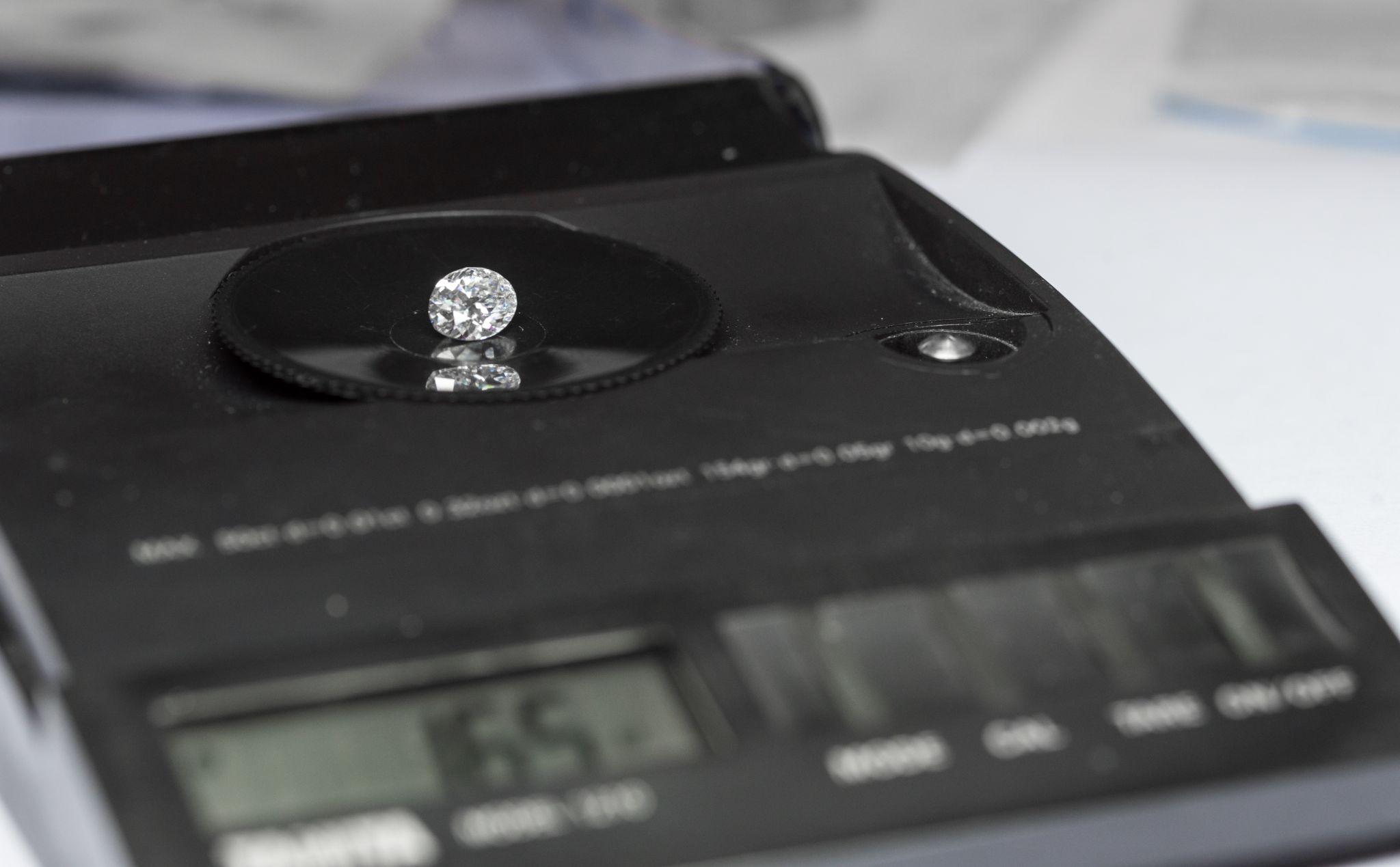
“Carat” is a term used within the diamond industry to signify the weight of a diamond. Derived from the carob seed, an item of remarkably consistent weight, the carat became an international standard in the early 20th century. The size of a 1 carat diamond equals approximately 200 milligrams, or 0.2 grams.
Although many people equate carat with size, the truth is slightly more complex. Two separate diamonds of similar or equal carat weight may appear different in size depending on their type of cuts, diamond shapes, and how weight is distributed within the stone.
Diamond Size Chart: Millimeters to Carat Weight
One of the first steps to accurately assessing a diamond’s size is to understand the relationship between its physical dimensions, usually measured in millimeters (mm), and its carat weight. Here is a simple chart to help you gain an understanding:
| Millimeters (mm) | Carat Weight |
| 1.0 mm | Approximately 0.005 carats |
| 2.0 mm | Approximately 0.03 carats |
| 3.0 mm | Approximately 0.10 carats |
| 4.0 mm | Approximately 0.25 carats |
| 5.0 mm | Approximately 0.50 carats |
| 6.0 mm | Approximately 0.75 carats |
| 7.0 mm | Approximately 1.25 carats |
| 8.0 mm | Approximately 2.00 carats |
It’s crucial to note that this chart is an approximation and is based on averages of round brilliant diamonds. The exact size and carat weight can also depend on a diamond’s depth and cut quality.
What Is the Weight of a Half-Carat Diamond?
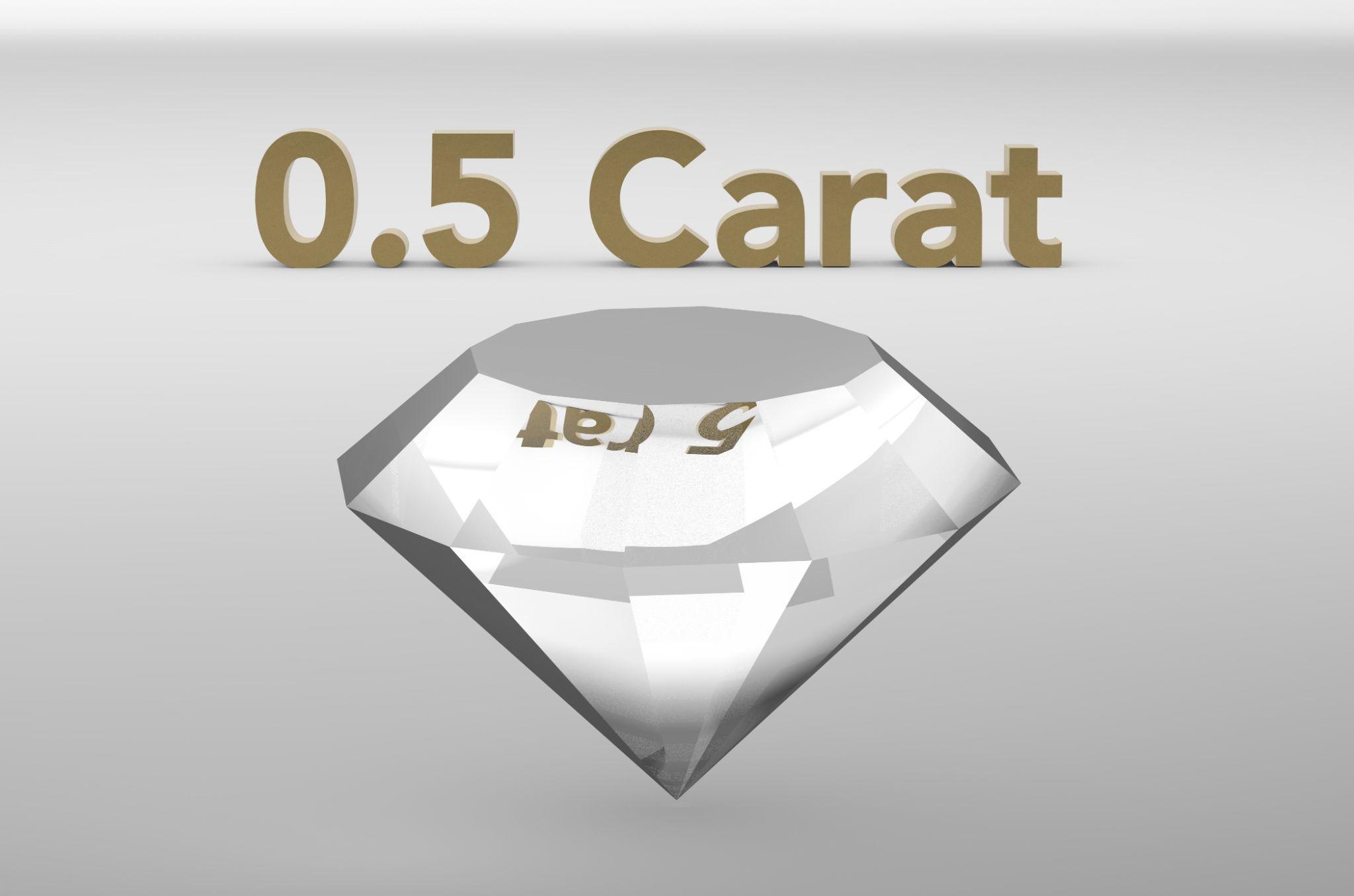
A half-carat diamond, as the name suggests, weighs 0.50 carats, which is equivalent to 100 milligrams. It’s a popular choice for engagement rings, offering a balance of size, sparkle, and affordability.
How Large Is a Half-Carat Diamond?
The physical size of a half-carat diamond depends largely on its cut and shape. On average, a round half-carat diamond typically measures about 5.0 mm in diameter. However, a half-carat diamond with a different cut, such as a princess or emerald cut, may appear larger or smaller due to the way the diamond’s weight is distributed.
Why Does Diamond Carat Weight Matter?
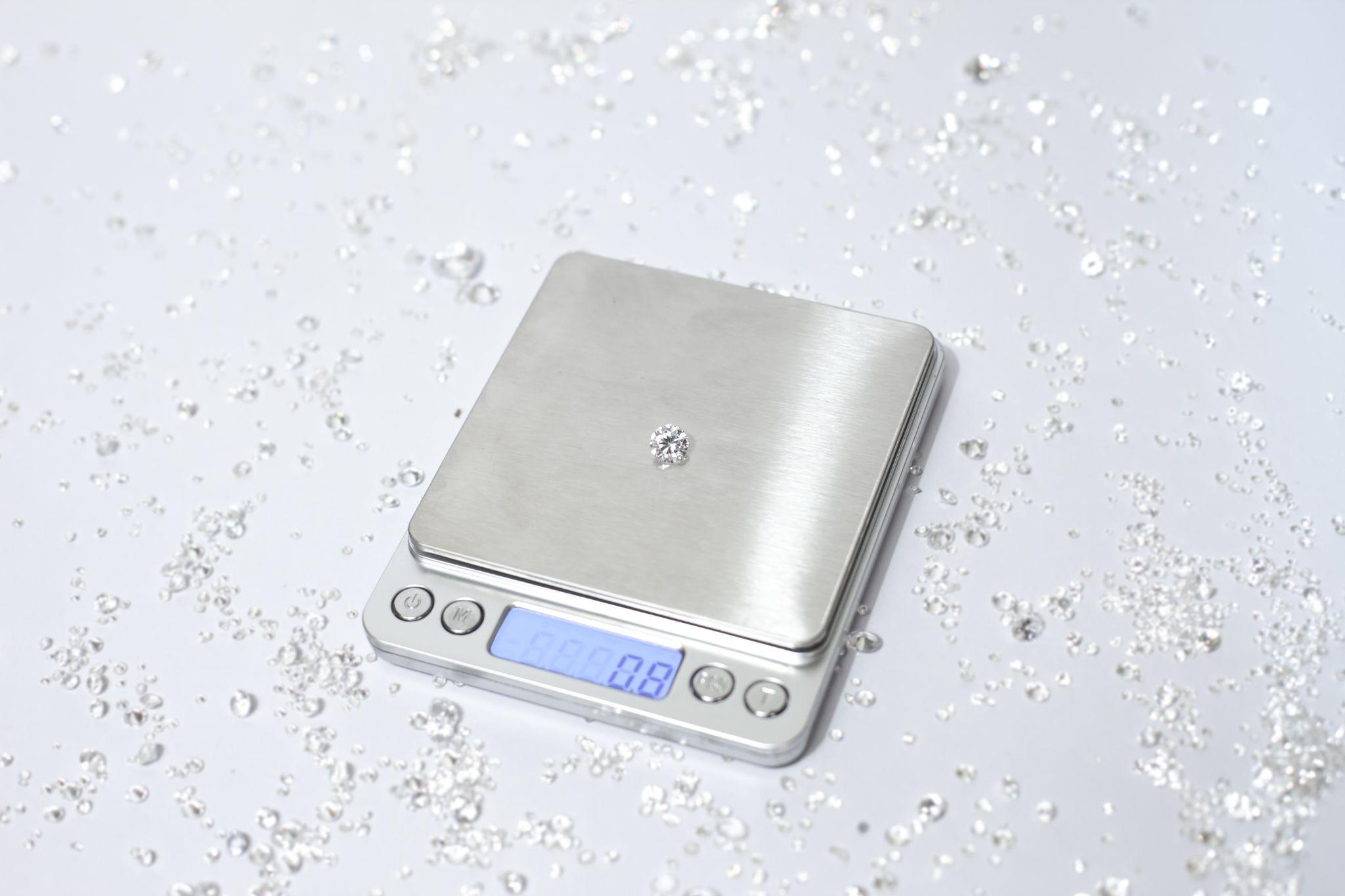
Carat weight is one of the crucial elements that contribute to a diamond’s value. Larger diamonds are rarer and, therefore, more valuable per carat. This is why a single two-carat diamond is much more expensive than two one-carat diamonds of the same quality.
In addition, carat weight can influence a diamond’s perceived size and brilliance. Larger carat weights often appear more impressive and may exhibit more brilliance, fire, and scintillation due to their larger facets. However, it’s important to balance carat weight with other elements of diamond quality, such as cut, clarity, and color, to ensure the overall beauty and value of the stone.
To ensure precision and ease of communication, gemologists and jewelers also use a point system to refer to diamond carat weight.
Each carat is divided into 100 points:
- 50 points are equivalent to 0.5 carats
- 100 points correspond to 1 carat
- 500 points equal 5 carats
This point system allows for very precise measurements, crucial in determining the value of diamonds, especially those of high quality.
The Importance of GIA Certification for Your Diamond

The Gemological Institute of America, or GIA, is a highly respected independent organization that conducts detailed analyses of diamonds and other gemstones. When a diamond is GIA certified, it carries the assurance that you’re getting exactly what you’re paying for, down to the precise details of the diamond’s quality. Here’s why GIA certification is paramount:
Unbiased Grading
GIA is a non-profit entity committed to protecting buyers and sellers of gemstones by providing unbiased assessments of a diamond’s quality. Unlike diamond retailers or other labs that might have a vested interest, GIA has no potential conflicts of interest, offering a fair, accurate, and unbiased evaluation of your diamond.
Consistency
GIA employs a rigorous and systematic approach to grading diamonds, utilizing the universally accepted 4Cs—cut, clarity, color, and carat weight. They created the International Diamond Grading System™, a grading standard that’s accepted and used worldwide. Thus, GIA certificates offer consistent, accurate, and comparable grading results.
Detailed Reports
A GIA certificate provides an in-depth report about a diamond’s qualities, including its 4Cs, as well as other information such as measurements, symmetry, polish, and any identifying characteristics. This report becomes a critical tool when selling a diamond as it gives you a precise understanding of the stone’s value.
Verifiable
Each GIA certificate carries a unique identification number, and the reports can be verified online on the GIA report check service. This allows you to confirm the details of your diamond’s certification independently.
Insurance and Resale Value
GIA-certified diamonds are easier to insure because the certification provides an accurate description of the diamond, which determines its worth. Moreover, if you decide to sell your diamond in the future, a GIA certificate could potentially increase its resale value because it assures buyers of the quality and authenticity of the diamond.
A GIA certification for your diamond is essential to ensure its value, quality, and authenticity. It’s a testament to a diamond’s inherent characteristics, providing a comprehensive analysis that helps both buyers and sellers make informed decisions.
How Important Should Diamond Carat Size Be When Selling a Diamond?
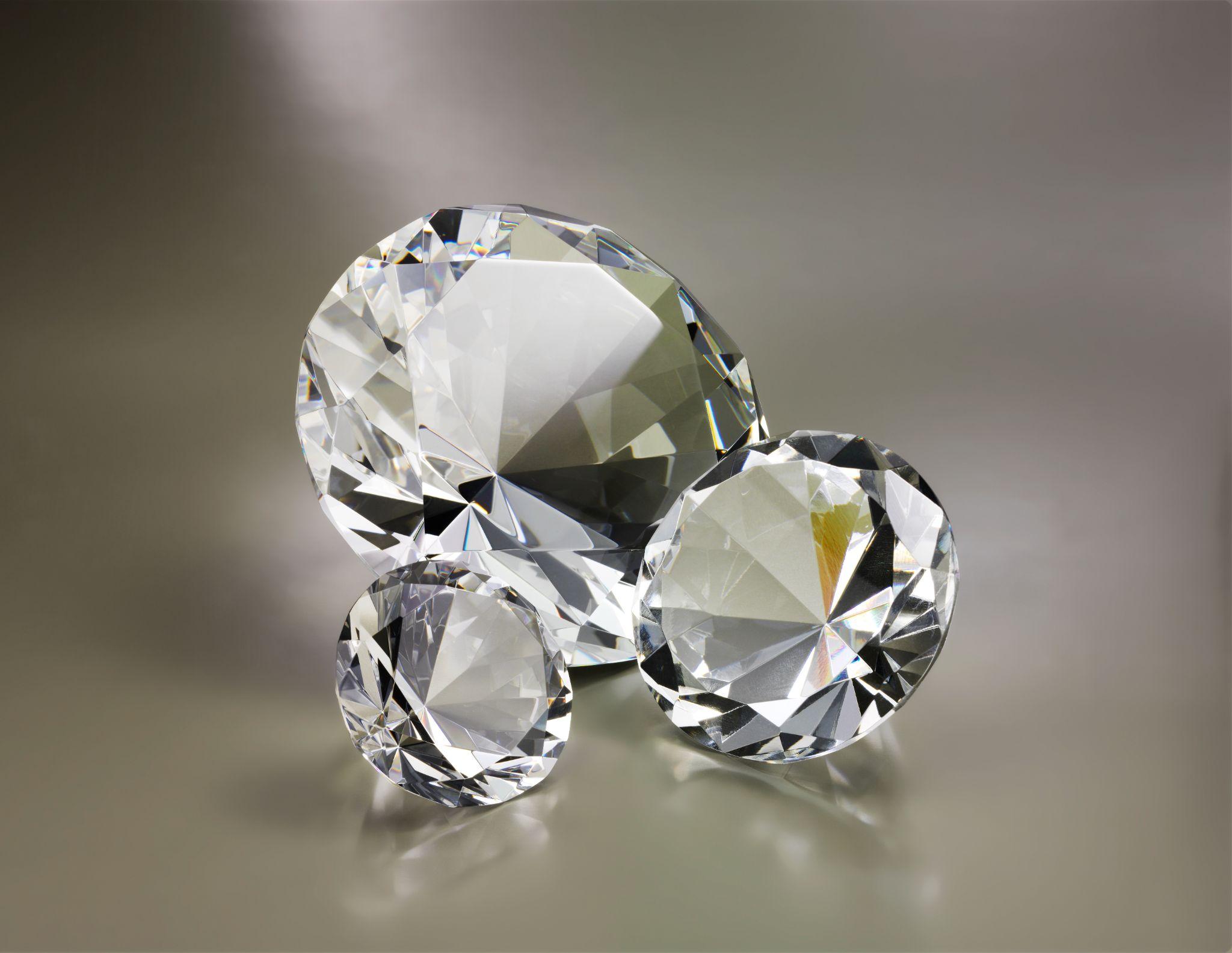
Determining the importance of carat size when selling a diamond involves several considerations. While carat size is undeniably a significant factor influencing a diamond’s value, it’s also crucial to remember it’s not the sole determinant. Let’s delve into why:
- Size Matters But Isn’t Everything: Larger diamonds, due to their rarity, tend to command higher prices in the market. Therefore, a diamond’s carat size can considerably impact its selling price. However, focusing solely on carat weight can overshadow other equally important attributes such as cut, clarity, and color.
- Balancing the 4Cs: The value of a diamond is often determined by the balance of the 4Cs—carat weight, cut, clarity, and color. A large diamond with poor clarity and color may not fetch as much as a smaller diamond of exceptional clarity and color. Similarly, a diamond with a poor cut can appear smaller than its carat weight might suggest, affecting its visual appeal and value.
- Market Trends: The demand for different carat weights can vary based on current market trends. At times, certain carat sizes may be more in demand, impacting their value on the market.
- Certification and Provenance: A diamond’s value is also affected by its certification. For example, diamonds certified by respected organizations like GIA generally command higher prices. Similarly, a diamond’s provenance, such as whether it’s a natural or lab-grown diamond, can also influence its selling price.
While carat size plays a significant role in determining a diamond’s selling price, it should be considered in the context of other quality factors, market trends, and certification. Understanding the intricate balance of these elements can help sellers realize the best possible price for their diamond.
Considering Carat Weight When Selling Your Diamonds to Diamonds USA
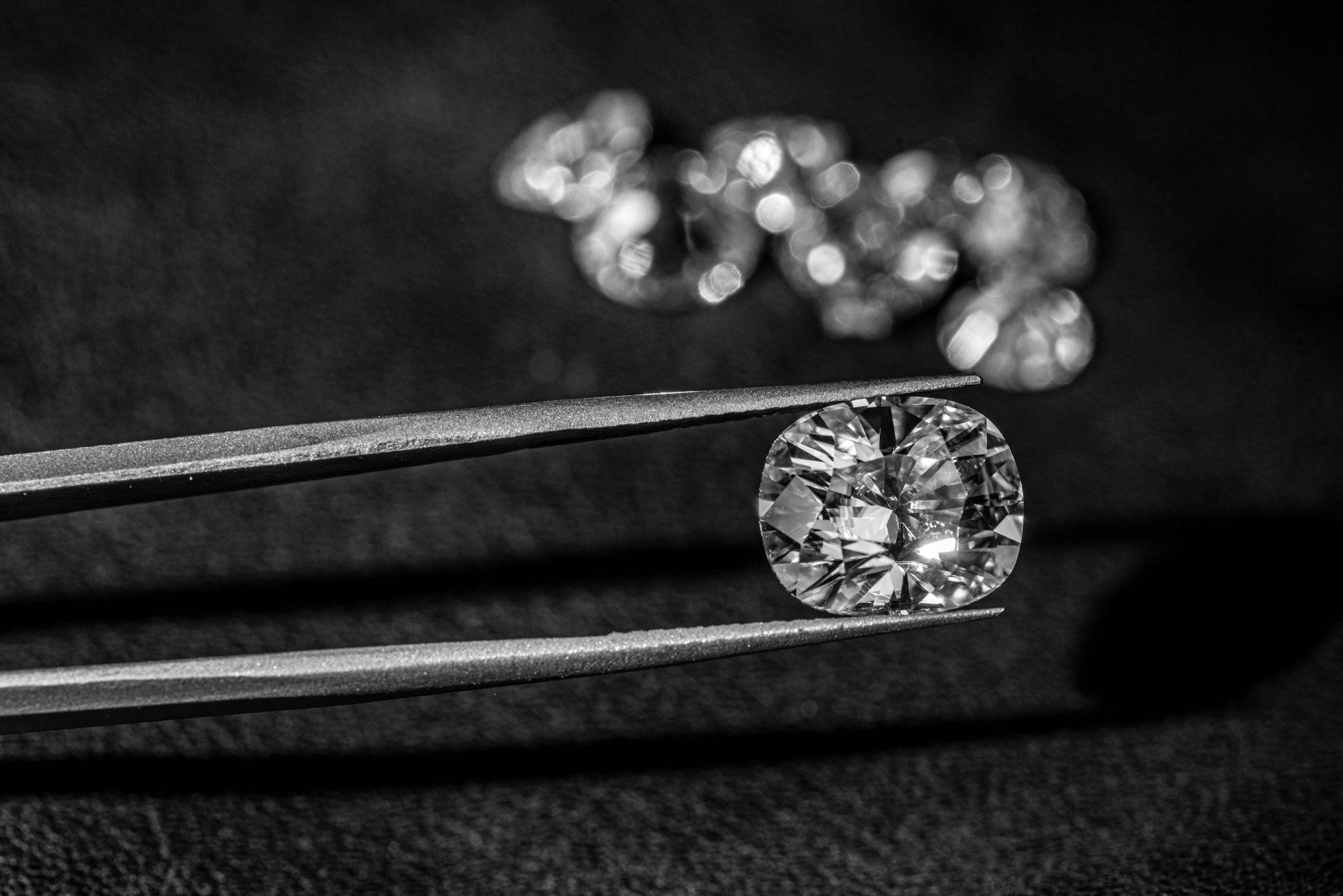
Understanding diamond sizes and carat weight is a vital part of selling your diamonds. While carat weight is a key factor, remember that the overall value and appeal of a diamond involve a balance of its carat weight, cut, clarity, and color and market demand. Request your complimentary diamond appraisal kit from Diamonds USA to determine your diamond’s potential.
Sources: https://www.gia.edu/gem-education/overview
ABOUT DIAMONDS USA
Diamonds USA is a prominent online buyer of all diamonds, as well as gold, silver, platinum, and palladium, in the United States. Since 2005, we have paid millions to thousands of customers for their unwanted diamonds or broken precious metal jewelry. We offer a quick and straightforward selling process, ensuring customers receive prompt and competitive offers for their items. Learn more about us, or request your free Appraisal Kit now: